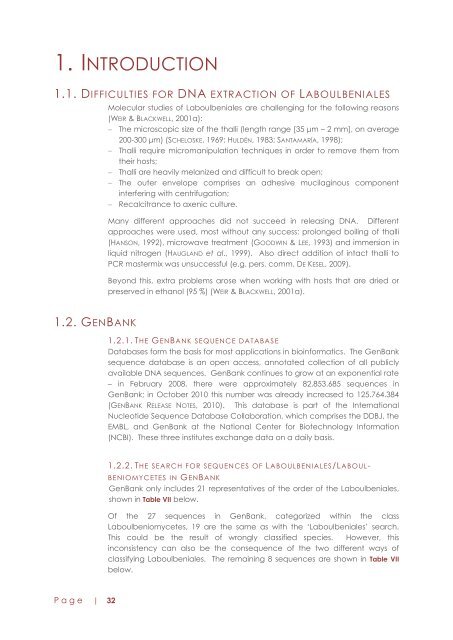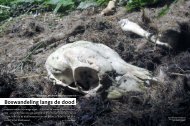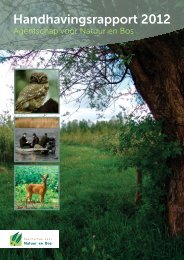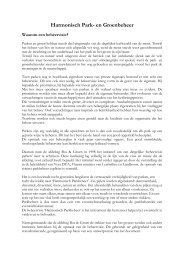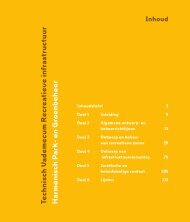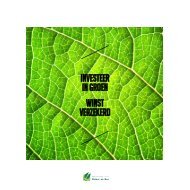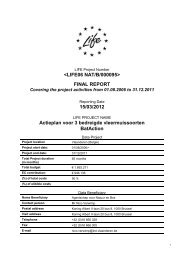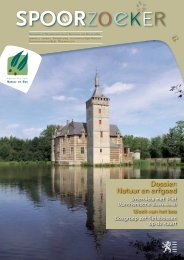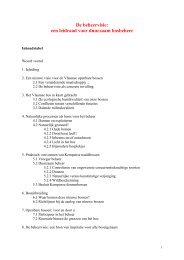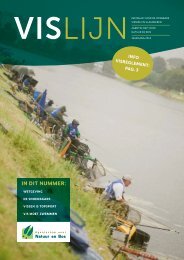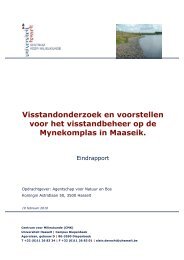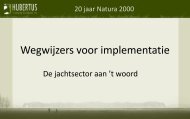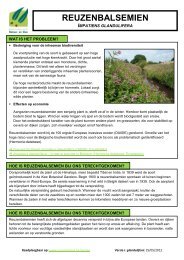LABOULBENIALES - Agentschap voor Natuur en Bos
LABOULBENIALES - Agentschap voor Natuur en Bos
LABOULBENIALES - Agentschap voor Natuur en Bos
You also want an ePaper? Increase the reach of your titles
YUMPU automatically turns print PDFs into web optimized ePapers that Google loves.
1. INTRODUCTION1.1. DIFFICULTIES FOR DNA EXTRACTION OF <strong>LABOULBENIALES</strong>Molecular studies of Laboulb<strong>en</strong>iales are chall<strong>en</strong>ging for the following reasons(WEIR & BLACKWELL, 2001a):The microscopic size of the thalli (l<strong>en</strong>gth range [35 μm – 2 mm], on average200-300 μm) (SCHELOSKE, 1969; HULDÉN, 1983; SANTAMARÍA, 1998);Thalli require micromanipulation techniques in order to remove them fromtheir hosts;Thalli are heavily melanized and difficult to break op<strong>en</strong>;The outer <strong>en</strong>velope comprises an adhesive mucilaginous compon<strong>en</strong>tinterfering with c<strong>en</strong>trifugation;Recalcitrance to ax<strong>en</strong>ic culture.Many differ<strong>en</strong>t approaches did not succeed in releasing DNA. Differ<strong>en</strong>tapproaches were used, most without any success: prolonged boiling of thalli(HANSON, 1992), microwave treatm<strong>en</strong>t (GOODWIN & LEE, 1993) and immersion inliquid nitrog<strong>en</strong> (HAUGLAND et al., 1999). Also direct addition of intact thalli toPCR mastermix was unsuccessful (e.g. pers. comm. DE KESEL, 2009).Beyond this, extra problems arose wh<strong>en</strong> working with hosts that are dried orpreserved in ethanol (95 %) (WEIR & BLACKWELL, 2001a).1.2. GENBANK1.2.1. THE GENBANK SEQUENCE DATABAS EDatabases form the basis for most applications in bioinformatics. The G<strong>en</strong>Banksequ<strong>en</strong>ce database is an op<strong>en</strong> access, annotated collection of all publiclyavailable DNA sequ<strong>en</strong>ces. G<strong>en</strong>Bank continues to grow at an expon<strong>en</strong>tial rate– in February 2008, there were approximately 82.853.685 sequ<strong>en</strong>ces inG<strong>en</strong>Bank; in October 2010 this number was already increased to 125.764.384(GENBANK RELEASE NOTES, 2010). This database is part of the InternationalNucleotide Sequ<strong>en</strong>ce Database Collaboration, which comprises the DDBJ, theEMBL, and G<strong>en</strong>Bank at the National C<strong>en</strong>ter for Biotechnology Information(NCBI). These three institutes exchange data on a daily basis.1.2.2. THE SEARCH FOR SEQUEN CES OF <strong>LABOULBENIALES</strong>/LABOUL-BENIOMYCETES IN GENBANKG<strong>en</strong>Bank only includes 21 repres<strong>en</strong>tatives of the order of the Laboulb<strong>en</strong>iales,shown in Table VII below.Of the 27 sequ<strong>en</strong>ces in G<strong>en</strong>Bank, categorized within the classLaboulb<strong>en</strong>iomycetes, 19 are the same as with the „Laboulb<strong>en</strong>iales‟ search.This could be the result of wrongly classified species. However, thisinconsist<strong>en</strong>cy can also be the consequ<strong>en</strong>ce of the two differ<strong>en</strong>t ways ofclassifying Laboulb<strong>en</strong>iales. The remaining 8 sequ<strong>en</strong>ces are shown in Table VIIbelow.P a g e | 32


